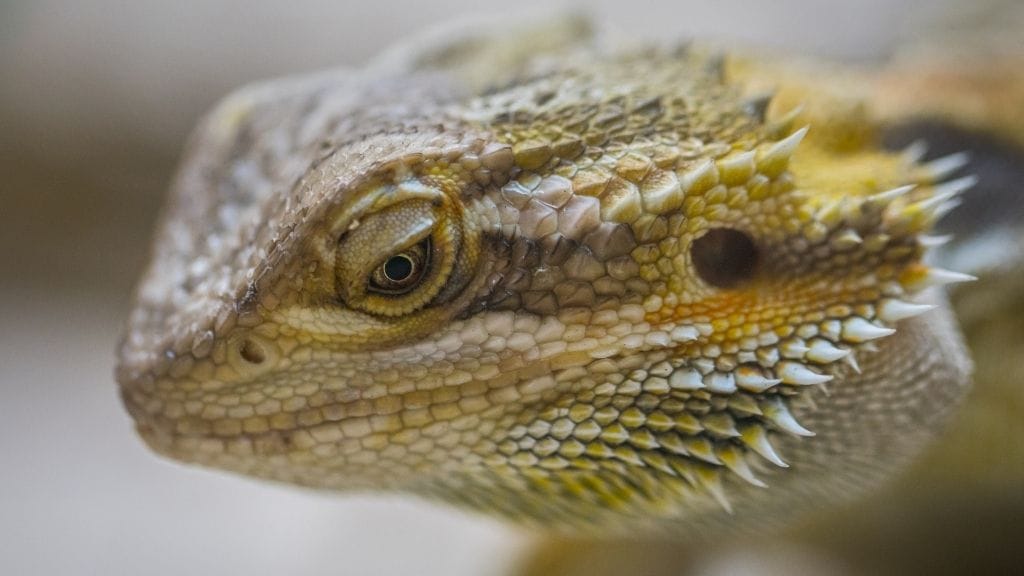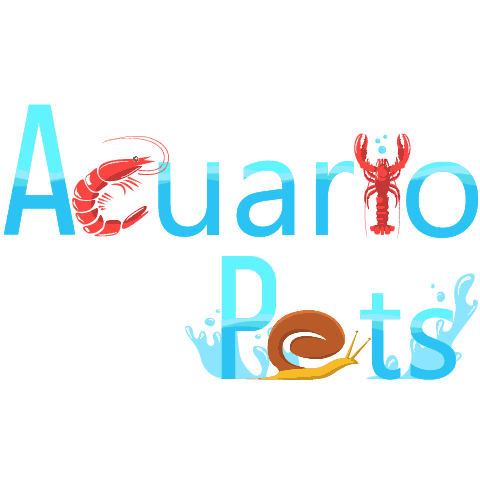This post was created with help from AI tools and carefully reviewed by a human (Muntaseer Rahman) . For more on how we use AI on this site, check out our Editorial Policy.
Check Out These FREE Tools We Made JUST For You!
Bearded Dragon Behavior: Are They Friendly Towards Owner?

When I first adopted my bearded dragon, I wasn’t sure what to expect. Would it react to me like a pet dog, or would it just see me as a food dispenser?
Over time, I noticed some surprising behaviors that made me wonder—do bearded dragons actually recognize their owners?

Why Bearded Dragons Are Friendly?
Bearded dragons are also known as ‘The Dog Of Reptiles’. Like dogs, they can get quite social around humans, especially their owners. By passing quality time, your bearded dragon can really form a strong relationship with you. You might even get welcomed by him whenever you pass around its enclosure.
It is not uncommon for tamed bearded dragons to rush towards the front glass whenever they see their owners. Like dogs, they crave & enjoy attention and cuddle from their owner. However, that doesn’t mean bearded dragons will welcome you to handle them every time.
Sometimes, they might not be in the mood to be handled. In that case, they will show you specific signs to communicate ‘Don’t disturb me now, please!’
You’ll need to respect those signs, and thus the bonding between you two will get even stronger.
5 Bearded Dragon Behaviors You Need To Understand
In order to fully understand the friendly demeanors of a bearded dragon, we need to decode some of the behaviors. Bearded dragons are one of the most social reptile pets around the world and they can show various complex behaviors.
As owners, it is our responsibility to understand these behaviors and respect the beardie’s wishes. In this section, I’ll talk about 5 major behaviors of bearded dragons.
If you understand these behaviors, it will be much easier for you to bond with your bearded dragon even further and safely.
Let’s start with the most important one.
1. Bearded Dragons Can Be Social Up To A Point
I know bearded dragons are called the dog of reptiles. However, they are not ‘dogs’. Unlike dogs, they don’t welcome too much cuddling or handling. Even, they won’t welcome you sometimes if they don’t want to be handled. So, you need to respect those signs.
- Though bearded dragons can be social, they are social up to a point. They are mostly friendly towards their owners, the person who brings them food and cleans their enclosure.
- Some bearded dragons are only friendly towards the owner but don’t like to be around other people.
- Though beardies are generally social around people, this is not the case for other pets. Bearded dragons can be very territorial and can’t stand other beardies or pets (dogs, cats) around them. Though I heard some owners have kept dogs and bearded dragons successfully, I won’t recommend you to let your beardie free roam around the house in the presence of other pets.
- Not all bearded dragons are equal. It is not uncommon to see your bearded dragon totally detached from you. That means, it will take a longer time to tame the beardie, so don’t lose hope.
2. Territorial & Not Friendly Towards Other Bearded Dragons
Though I have already discussed this point, I want to shed more light on this. Even though bearded dragons are social around people, they can be very territorial towards other bearded dragons.
That’s why it is not recommended to keep multiple adult bearded dragons in the same enclosure. If you do, chances are they will fight each other to death or seriously injure one another.
I even heard stories that one juvenile bearded dragon crushed the skull of another just because it got hungry.
Though bearded dragons are very docile, they can truly show their ‘Dragon’ demeanor towards other bearded dragons.
3. Bearded Dragons Can Get Comfortable Around Owners (But Not Strangers)
I have seen some bearded dragons that are friendly towards people in general. However, that’s not the case for most of the bearded dragons.
Most bearded dragons are friendly only towards their owner, the person feeding them everyday.
So, if you are bringing your friends over and want your bearded dragon to show a display of affection to each of your friends, you might get disappointed. Even, I won’t recommend you to expose your bearded dragon towards other people especially if the bearded dragon is not comfortable around lots of humans.
Take time and introduce your bearded dragon to other humans, other members of your family gradually. Bonding doesn’t happen overnight, it takes time.
4. Tamed Bearded Dragons Can Be Around Children
Bearded dragons are so friendly that they are even safe around children. So, if your child wants to play with the beardie, let him/her play. But make sure the bearded dragon is tamed first and comfortable around people.
- Even though tamed bearded dragons are comfortable and safe around children, adult supervision is required. Make sure you have an eye on your child to prevent any unforeseeable event.
- The child needs to practice basic hygiene rules before and after handling the bearded dragon. Most reptiles, including bearded dragon, carry a bacteria called salmonella. Salmonella can be pretty dangerous, especially if the children get attacked. But don’t be alarmed. Just make sure your child is washing his hands well before and after handling the dragon. Also, he/she shouldn’t put his hand in mouth while handling the pet.
- The same hygiene rules apply even to you. Always wash your hands before and after doing anything related to the bearded dragon: feeding, handling, cleaning the enclosure, petting, etc.
5. Bearded Dragons Can Show Signs If They Feel Disturbed
Though bearded dragons are generally friendly, that is not the case all the time. Sometimes your beardie might want some alone time, just be by herself. In those cases, you need to honor your dragon’s request and don’t handle him unnecessarily.
Bearded dragons can show some signs that tell ‘Don’t disturb me now’. Some of these signs are:
Head Bobbing:
Though bearded dragons can’t talk, they can communicate a lot of feelings by bobbing their heads. These bobbings are not random. There are specific sequences and speeds of bobbing that communicate different feelings the bearded dragon is experiencing.
These sequences are not universal and stay the same for all of the dragons. Some beardies might add his unique flair to these sequences.
In general, rapid head bobbings mean the bearded dragon is feeling threatened, scared, or being challenged, aggressive. In general, if you see your bearded dragon is bobbing its head rapidly, then you shouldn’t bother him.
Puffing Up
Puffing up is another way bearded dragons use to show that they are feeling scared, aggressive, or threatened. This is a pretty common behavior from wild bearded dragons. When beardies puff up, they make their head look bigger and puff up their chin, which looks like a beard.
That’s why they are called ‘Bearded Dragon’!

Real Life Experiences From Bearded Dragon Owners
Till now, I have only told you what behaviors you can expect from a bearded dragon. But now, I want to show you some real-life examples from real bearded dragon owners!
In a very popular bearded dragon owner group, I have asked the members to share their experience of how friendly their beardies are. From many responses, I am mentioning some notable ones:

“My dragon is pretty friendly like doesn’t try and bite me when I pick her up”
Abigail Lopez
No biting, and will stay on my lap. He is easy to pick up, he doesn’t run etc.
Rebecca Knapp
How to Build Trust with Your Bearded Dragon
Building trust with your bearded dragon takes time. It’s all about making them feel safe and comfortable. Here’s how you can do it.
Start with Gentle Handling
- Be consistent: Handle your dragon daily, but not for too long at first.
- Use slow movements: Quick grabs might scare them.
- Support their body: Always hold them securely, so they feel stable.
I remember when I first picked up my dragon, Spike. He puffed up his beard at me! But after a few days of gentle handling, he started to relax.
Create a Safe Environment
Your dragon’s home should be their happy place.
- Perfect temperature: Keep the basking spot warm (95-110°F).
- Hiding spots: They need a place to retreat if they feel nervous.
- Keep it clean: A clean tank makes a big difference.
When I upgraded Spike’s enclosure, he seemed much calmer. It’s like he was saying, “Finally, a place that’s dragon-worthy!”
Feed Them by Hand
- Offer treats like mealworms or leafy greens from your hand.
- Keep your hand steady and let them approach you.
- This teaches them that you’re safe (and the snack-bringer!).
Spike was suspicious of my hand at first. But the moment he realized it held food, we became besties.
Respect Their Space
- Don’t force interaction when they’re hiding.
- Let them come to you on their terms.
- Watch for signs they’re stressed, like puffing up or glass surfing.
I’ve learned that patience is key. Some days, Spike just wants to chill in his cave, and that’s okay.
Talk to Them
- Speak softly when you’re near their enclosure.
- Over time, they’ll get used to your voice and presence.
I’d tell Spike about my day while cleaning his tank. Now, he tilts his head like he’s listening!
| DO | DON’T |
|---|---|
| Be patient | Force handling |
| Move slowly | Make sudden movements |
| Provide a comfy habitat | Ignore their stress signs |
Building trust isn’t about rushing. It’s about showing your dragon you’re a friend, not a threat. Eventually, they’ll learn to trust you—and maybe even enjoy hanging out with you!

One loves to crawl all over me and one wants to snuggle and sleep in my shirt all the time. If I don’t put him in my shirt he will find a fold in my shirt or wedge himself under my chin and sleep.
Andrea Hidalgo
Friendly or Just Tolerant? Understanding the Line
Bearded dragons can seem super friendly. They’ll hang out on your shoulder or follow your hand with their eyes. But does that mean they like you? Maybe. Or maybe they just tolerate you.
Reptiles Aren’t Like Dogs
Unlike dogs, reptiles don’t feel emotions the same way. Bearded dragons don’t wag their tails when happy or greet you at the door. Their “friendliness” is more about comfort than affection.
Signs of Tolerance vs. Bonding
Here’s a quick breakdown:
| Tolerant Behavior | Friendly Behavior |
|---|---|
| Staying still when held | Actively climbing onto you |
| Closing eyes when touched | Licking or “nuzzling” lightly |
| Sitting in your lap silently | Curiously following your hands |
My Personal Experience
When I first got my dragon, Spike, he froze every time I picked him up. I thought he was being sweet. Turns out, he was just terrified. Over time, he started climbing onto my hand on his own. That’s when I realized he was finally comfortable.
What Does This Mean for You?
Don’t take it personally if your dragon isn’t cuddly. They’re reptiles, not teddy bears. The real win is when they stop running away or puffing up.
Take your time. Learn their quirks. Tolerance can grow into trust, and that’s the magic of owning a bearded dragon.

Common Misinterpretations of bearded dragon Behavior
Bearded dragons have quirky behaviors that can confuse owners. Here’s how to tell if they’re actually upset or just being themselves.
Avoiding Interaction
- They might run away or hide when you approach.
- This doesn’t always mean they hate you.
- Sometimes they’re just cold or overwhelmed.
When I first got my dragon, he darted to the corner every time I walked in. Turns out, I was too loud and moved too fast. Slowing down helped a lot!
Stress Behaviors
Stress shows up in funny ways. Watch for these signs:
- Glass Surfing: Frantic scratching on the tank walls. It usually means boredom, frustration, or bad tank setup.
- Puffing Their Beard: They puff up to look scary, but it’s more like a tantrum.
- Dark Beard: A darker color often means they’re upset or stressed.
My dragon puffed his beard every time I tried to feed him kale. It wasn’t about me—it was about his strong opinions on salad.
Confusing Signs of Affection
- Just because they close their eyes when you pet them doesn’t mean they love it.
- It’s actually a sign of tolerating, not enjoying.
- Think of it as a polite “fine, I’ll let you.”
I used to think my dragon loved head scratches. Then I read he was just putting up with me. It’s like when my dog ignores me but doesn’t move away.
How to Know the Difference
Here’s a quick table to help:
| Behavior | Possible Meaning |
|---|---|
| Glass Surfing | Boredom or bad enclosure setup |
| Closing Eyes While Petting | Tolerance, not enjoyment |
| Hiding | Overwhelmed or stressed |
| Puffing Beard | Fear or showing dominance |
Once you learn their quirks, it’s easier to avoid stressing them out. Patience is key—and a little humor doesn’t hurt!
About Author
Hello, I’m Muntaseer Rahman, the owner of AcuarioPets.com. I’m passionate about aquarium pets like shrimps, snails, crabs, and crayfish. I’ve created this website to share my expertise and help you provide better care for these amazing pets.
Disclaimer
This site is owned and operated by Muntaseer Rahman. AcuarioPets.com is a participant in the Amazon Services LLC Associates Program, an affiliate advertising program designed to provide a means for sites to earn advertising fees by advertising and linking to Amazon.com. This site also participates in other affiliate programs and is compensated for referring traffic and business to these companies.

